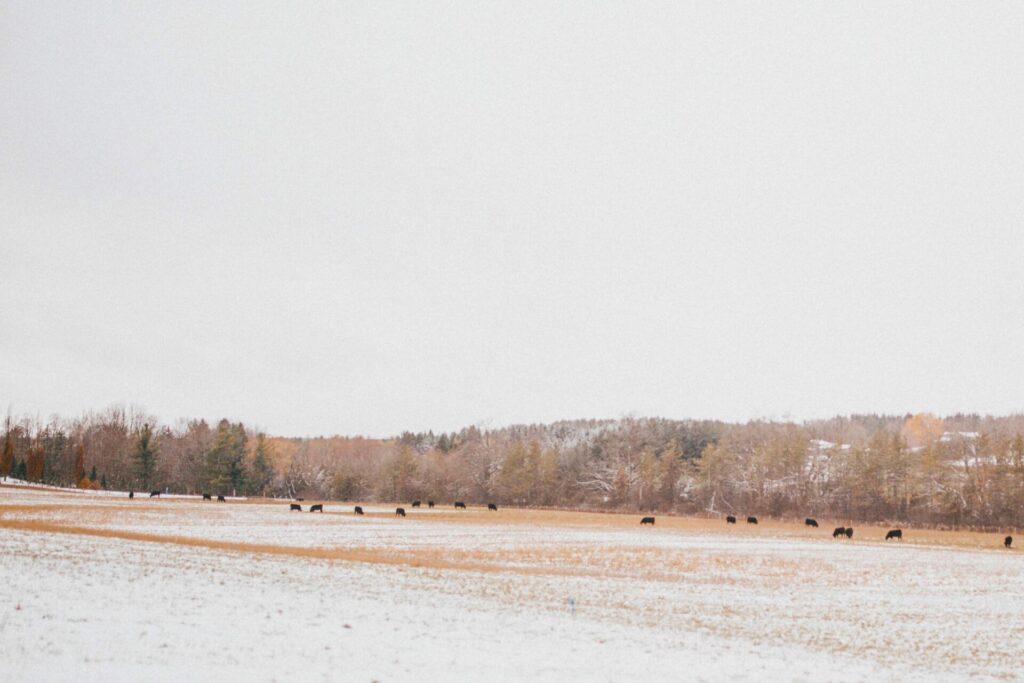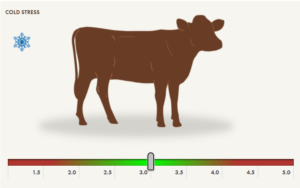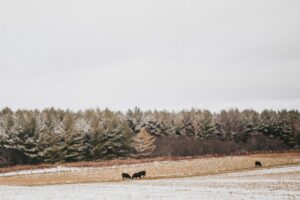Drought is More Than a Summer Challenge

Drought has been a common occurrence on the prairies and many producers are familiar with the long-term consequences of dry conditions. Dry weather and feed shortages can have consequences that last beyond the summer season.
“Drought is not just an issue when you are on pasture,” says Dr. John Campbell, veterinarian and professor at the Western College of Veterinary Medicine. “Drought affects feed resources which results in feeding very different things than we are used to and can cause trickle down effects into winter and the following years.”
Previous periods of drought have provided key learnings that can be useful in preventing further issues.
Impaction
When feed supplies are tight, some producers may be sourcing winter feeds that contain largely low-quality forages or straw as a fibre source. While this can be an affordable way to meet nutrient requirements, there are some things to watch out for.
Campbell highlights the fact that impaction can be an issue with these diets.
“Feed testing in general is a good idea when it comes to feeding these alternative diets.” says Campbell. “And then working with a nutritionist or veterinarian to make sure that NDF levels of the diet aren’t too high.”
Neutral detergent fibre, or NDF as it is listed on most feed tests, is a measurement of the structural component of the plant and therefore can help predict how much an animal can eat. As forages mature, their NDF content goes up, and, if it gets too high, cattle eat too much fibre meaning they can’t physically consume enough feed to meet their needs.
Impaction is caused when these low-quality forages essentially plug up the cow’s stomach leading to loss in condition, dehydration, weakness and even death.
Maintaining body condition score

When feed resources are slim, it can be temping to stretch feed which can lead to a drop in body condition in a herd. “It is much better to cull or buy feed than to let cattle lose condition going into the winter,” says Bart Lardner, professor at the University of Saskatchewan.
Losing condition before or during the winter-feeding period can result in cow health issues and reproductive losses, and the long-term costs far outweigh any short-term savings.
“It is extremely expensive to feed up a condition score,” says Lardner. “When cattle are coming in at a 2 out of a score of 5, you are essentially playing catch up through the winter-feeding period where your feed costs and energy demand of the cows are the highest.”
According to Lardner, when feed costs are high, maintaining adequate body condition should still be the priority.
Extended grazing

During drought conditions it may make sense to put cattle out on extended grazing pastures early.
“You may be moving those cattle onto your bank of extended grazing systems in September when you were planning for November,” says Lardner. “I always suggest having more than one system in your back pocket.”
It could be necessary to have multiple plans for utilizing your extended grazing pastures or supplement with purchased feed that can be rolled out on pasture or fed in a dry lot.
Pneumonia
Pneumonia can show up more often in drought years due to dusty, dry conditions. Campbell says a useful strategy to prevent pneumonia is to reduce stressors on calves. Reducing the number of times cattle are bunched together (e.g. sorting for AI programs, holding cattle in a pen) can also help prevent pneumonia symptoms.
Campbell also notes that if fall rains do occur, cattle can get “fog fever” (sometimes also referred to as emphysema) and show pneumonia-like symptoms that occur when cattle are transitioned too rapidly onto lush pastures.
If possible, allow cattle to slowly transition onto lush pasture, move cattle later in the day when their rumen is full or wait until after a hard frost to graze pastures with lush regrowth.
Having a good vaccine program can help reduce incidences of both.
If not managed properly, drought can bring not only feed shortages, but also long-term animal health implications. Even though they may seem like one more unwanted cost or chores, activities like feed testing, conducting hands-on body condition scoring and vaccination programs can become even more important in drought years.
When the stress of drought gets overwhelming, please reach out to your community or to professionals for mental health support. The Do More Agriculture Foundation website has a number of great resources, call line numbers and agricultural support groups.
Sharing or reprinting BCRC posts is welcome and encouraged. Please credit the Beef Cattle Research Council, provide the website address, www.BeefResearch.ca, and let us know you have chosen to share the article by emailing us at [email protected].
Your questions, comments and suggestions are welcome. Contact us directly or spark a public discussion by posting your thoughts below.